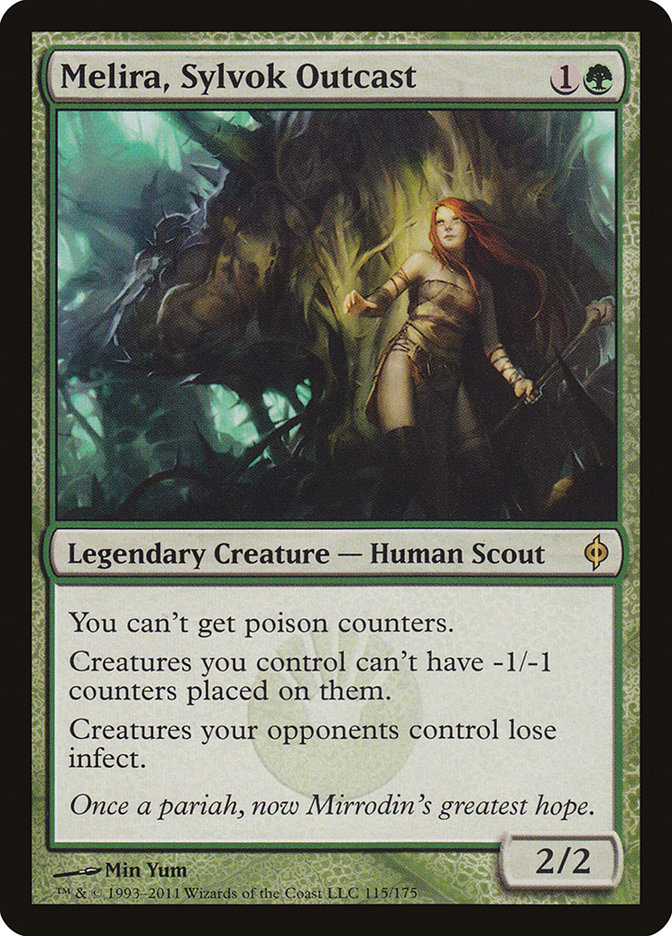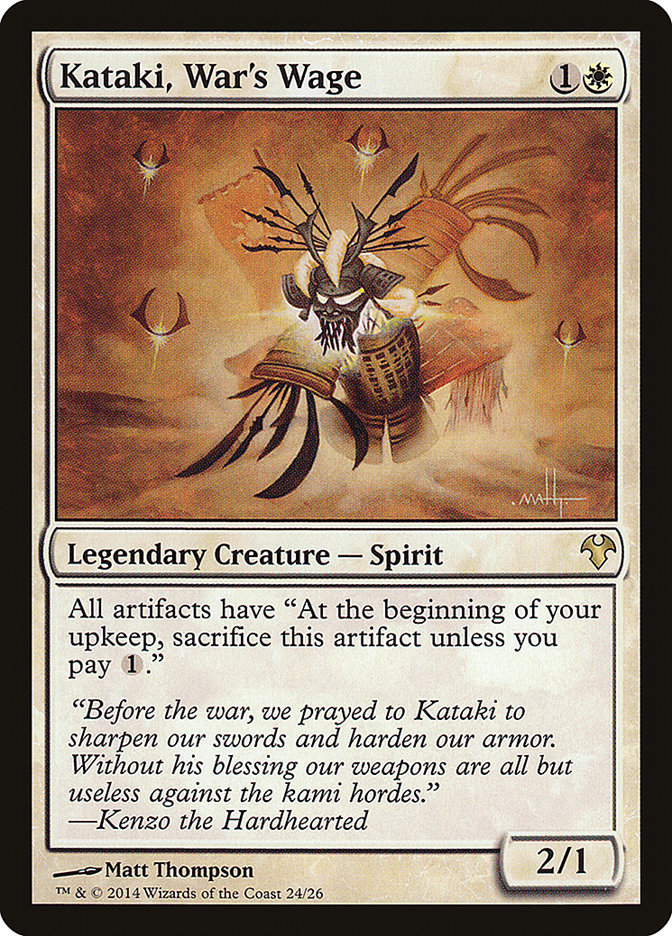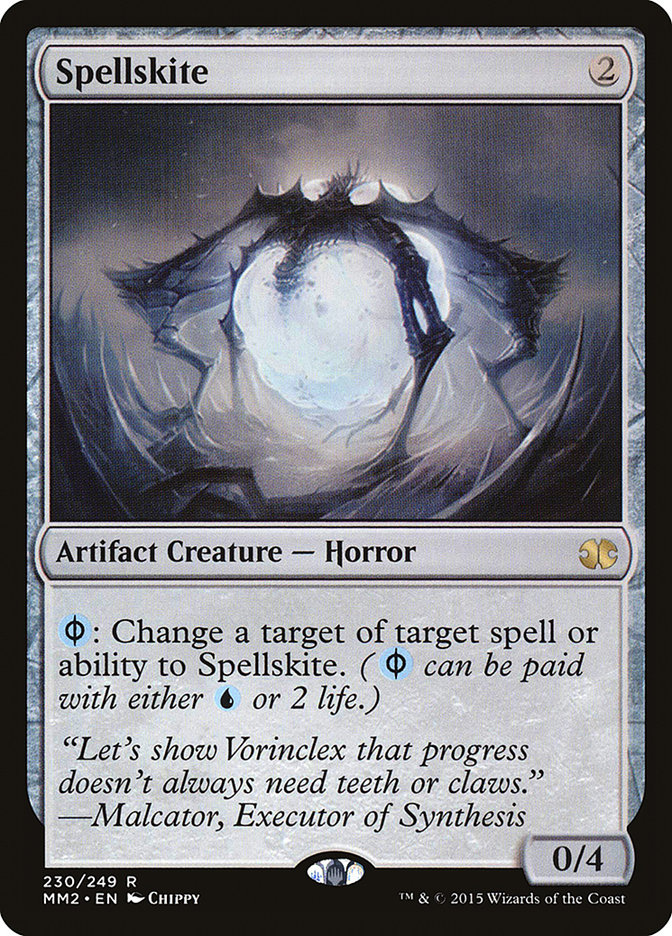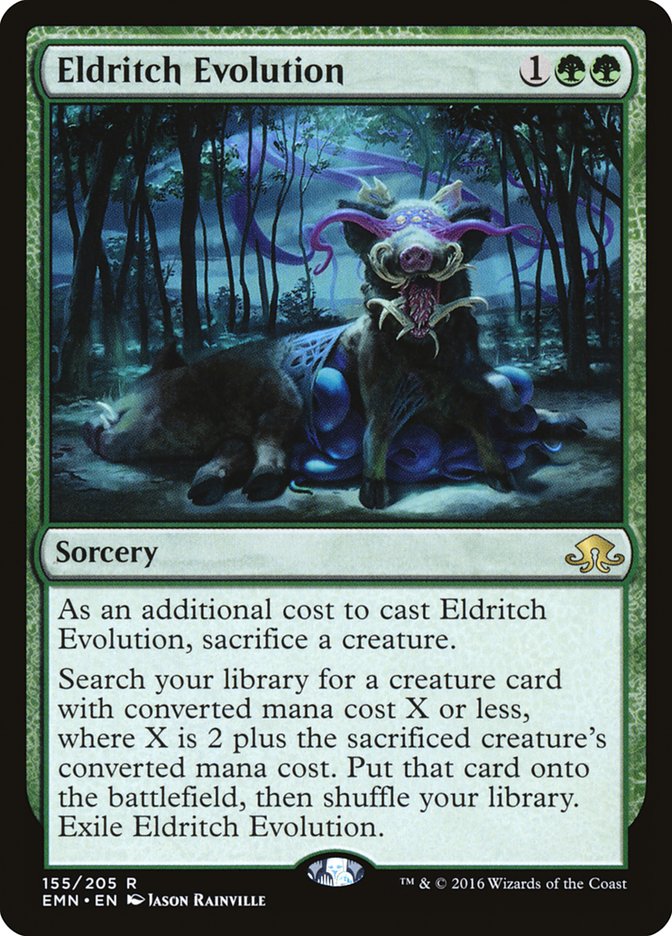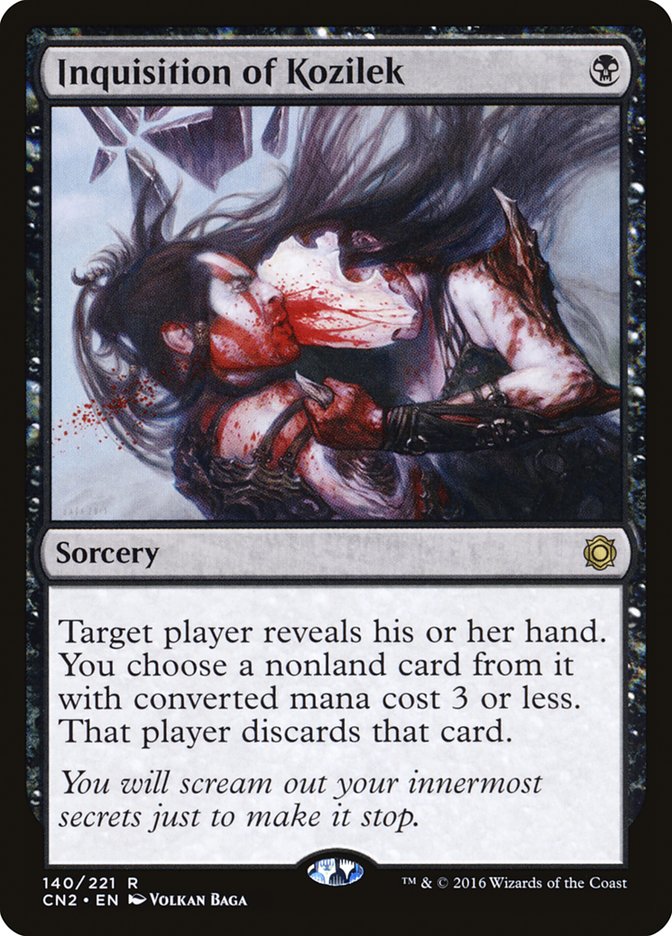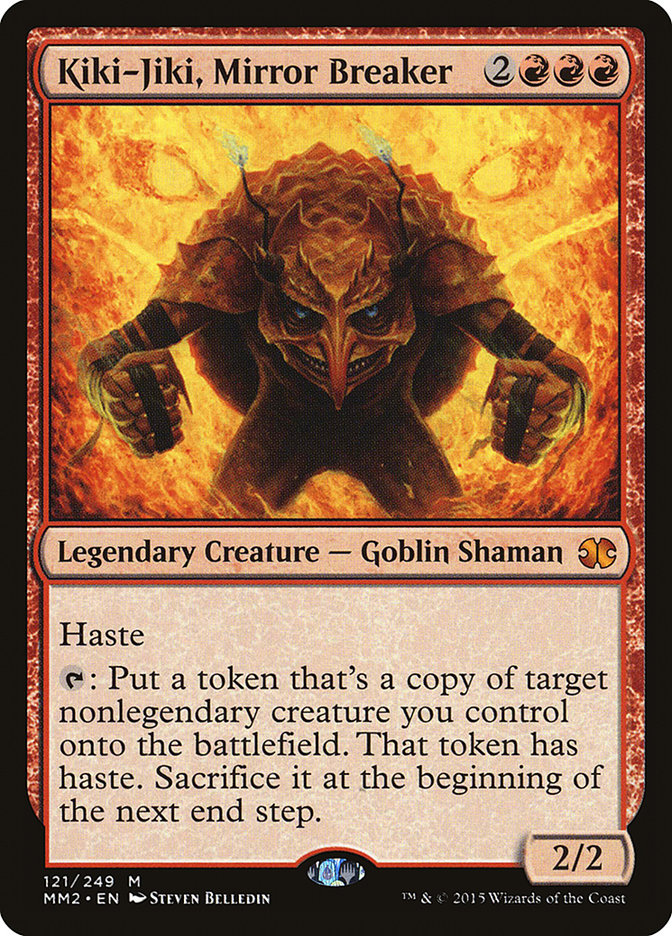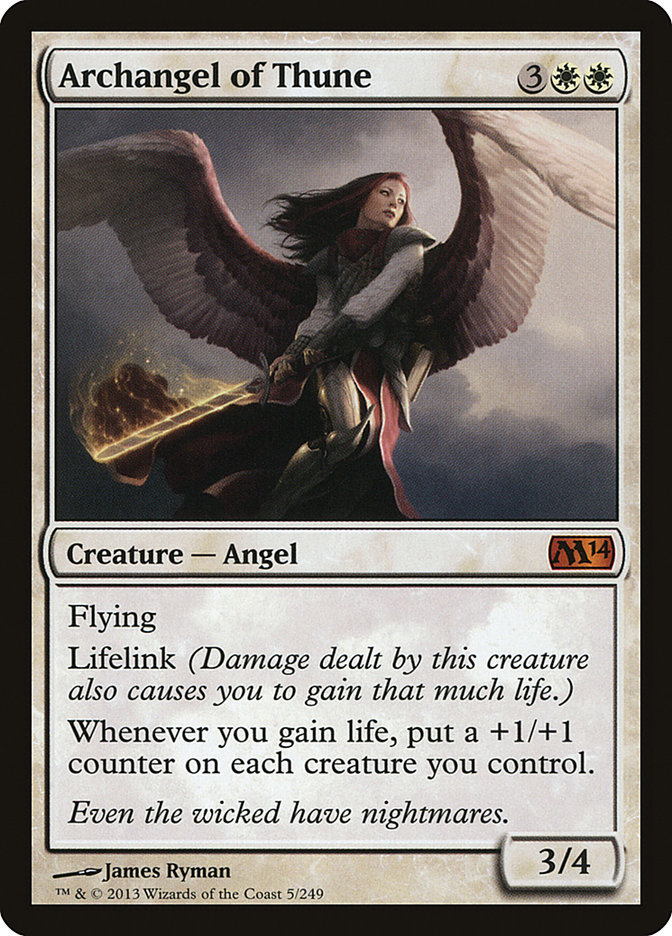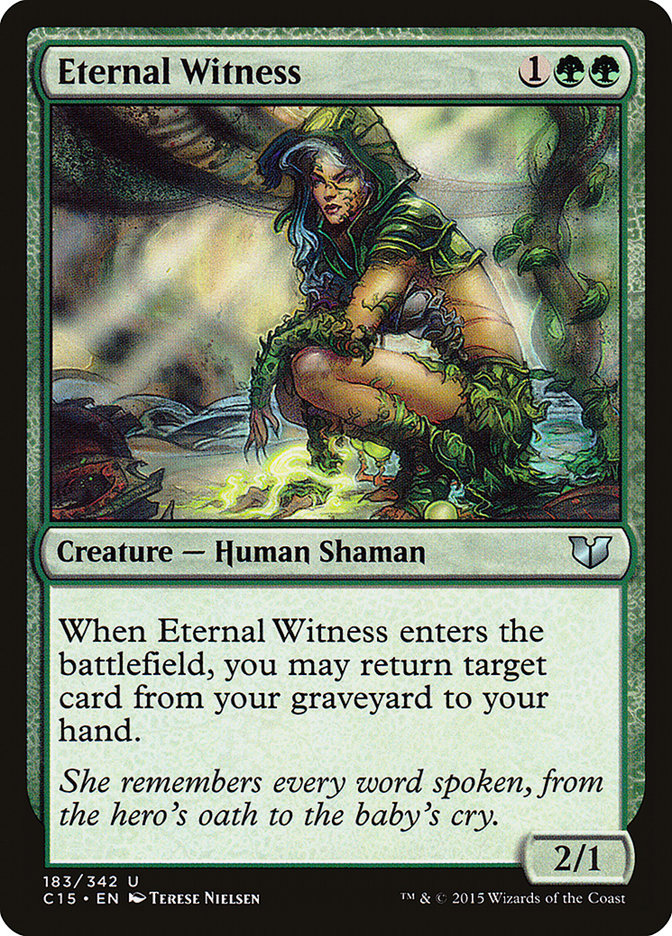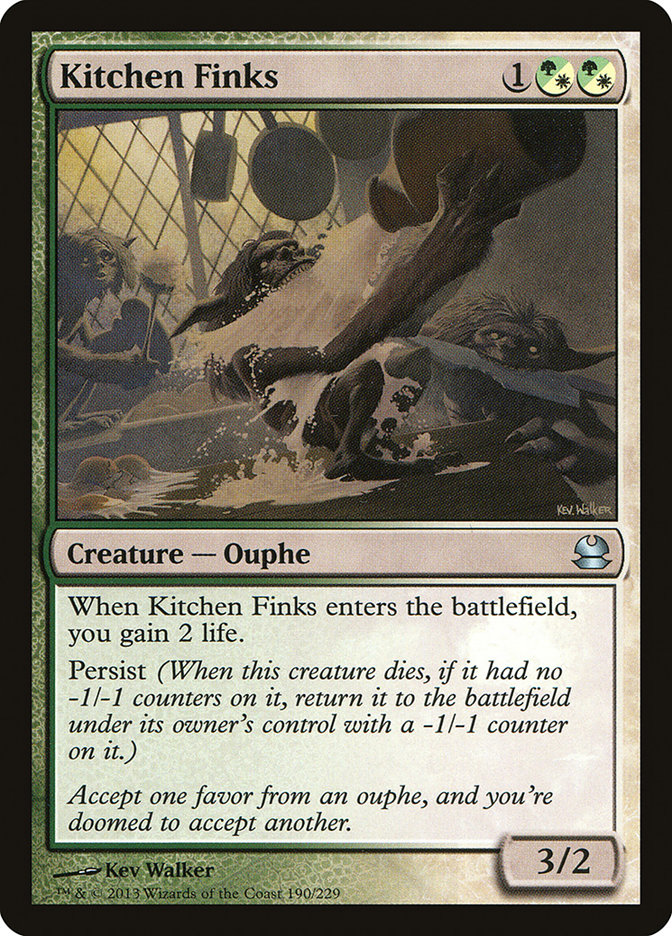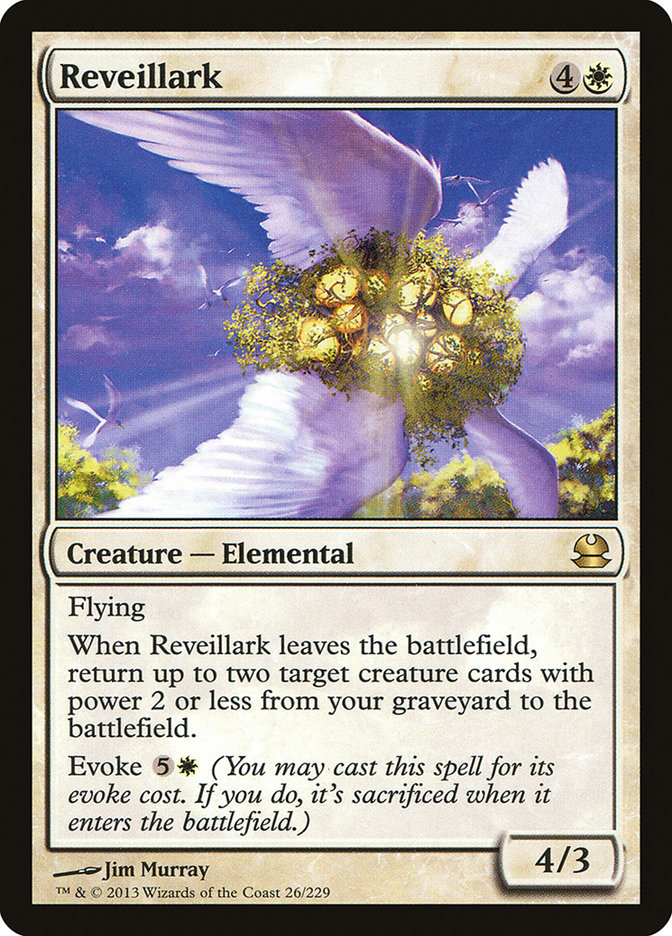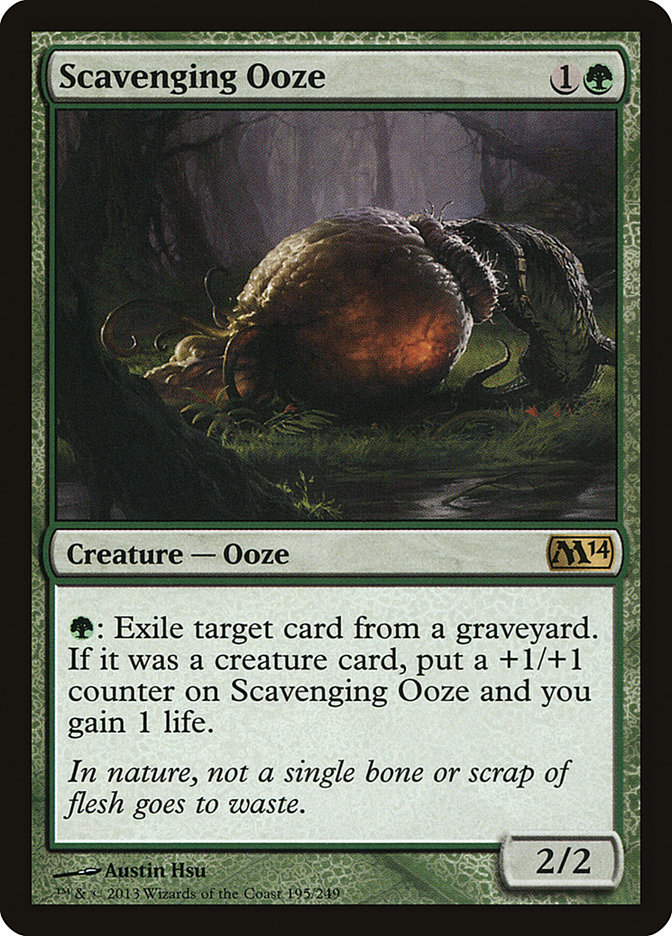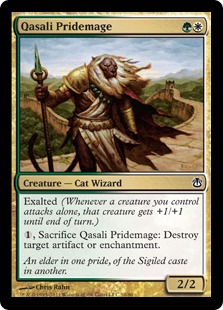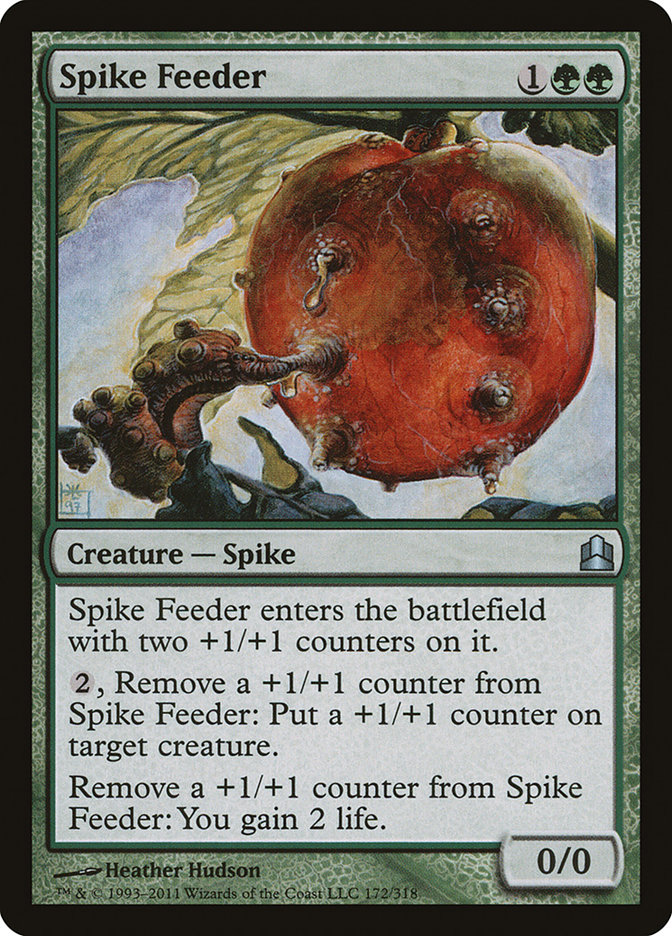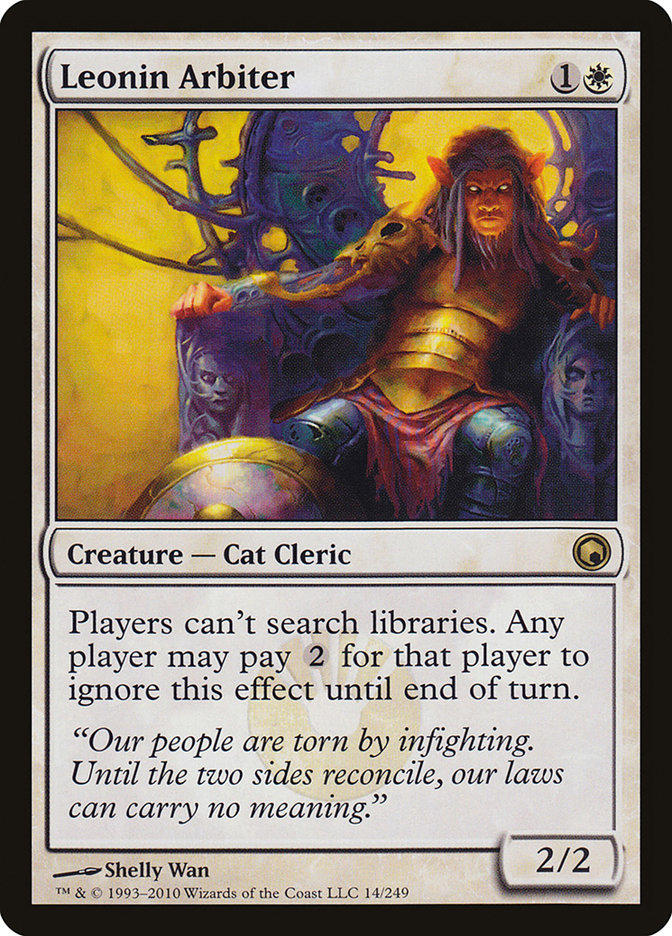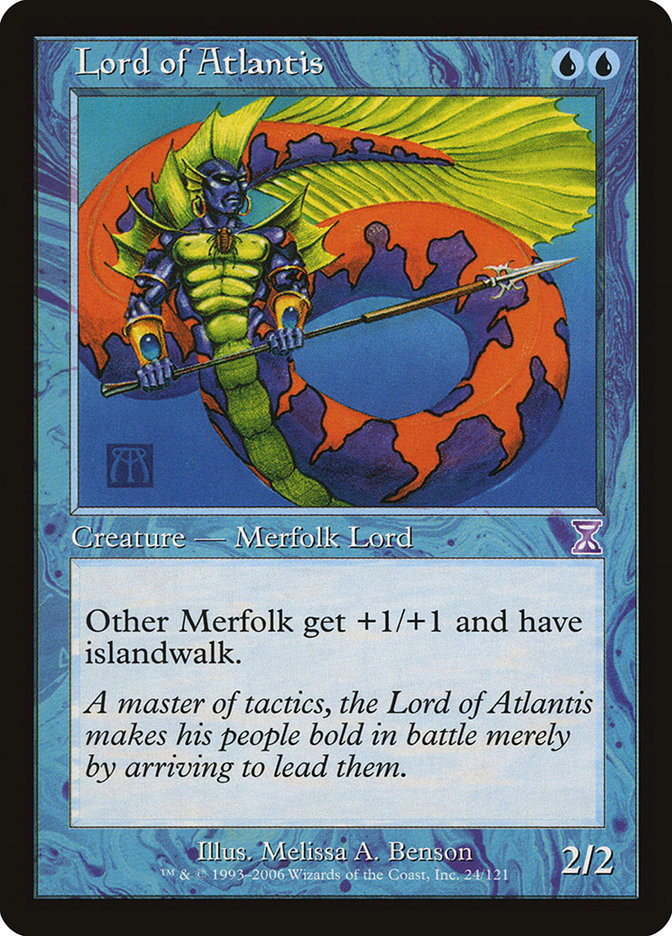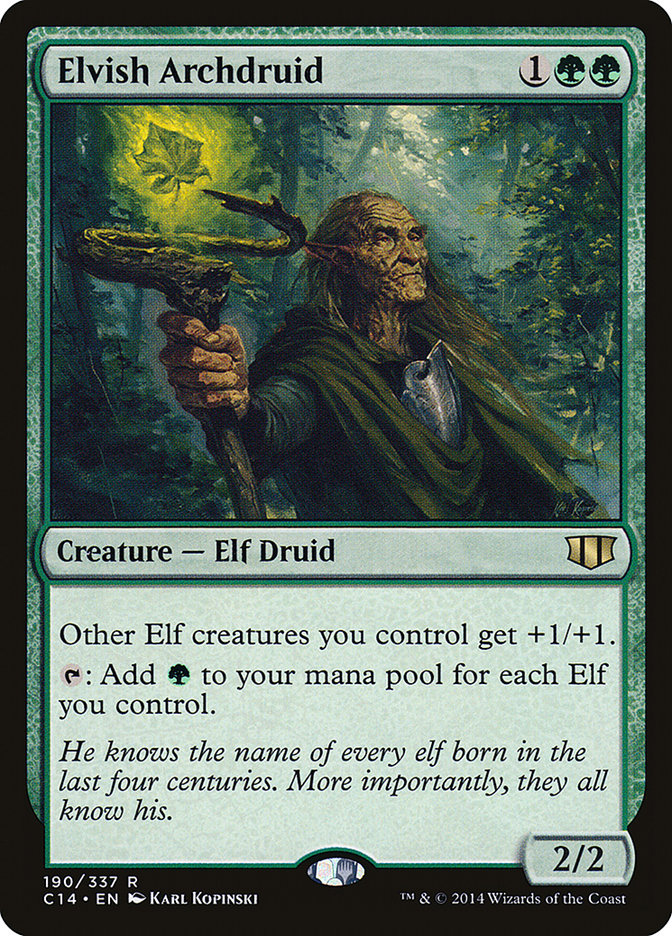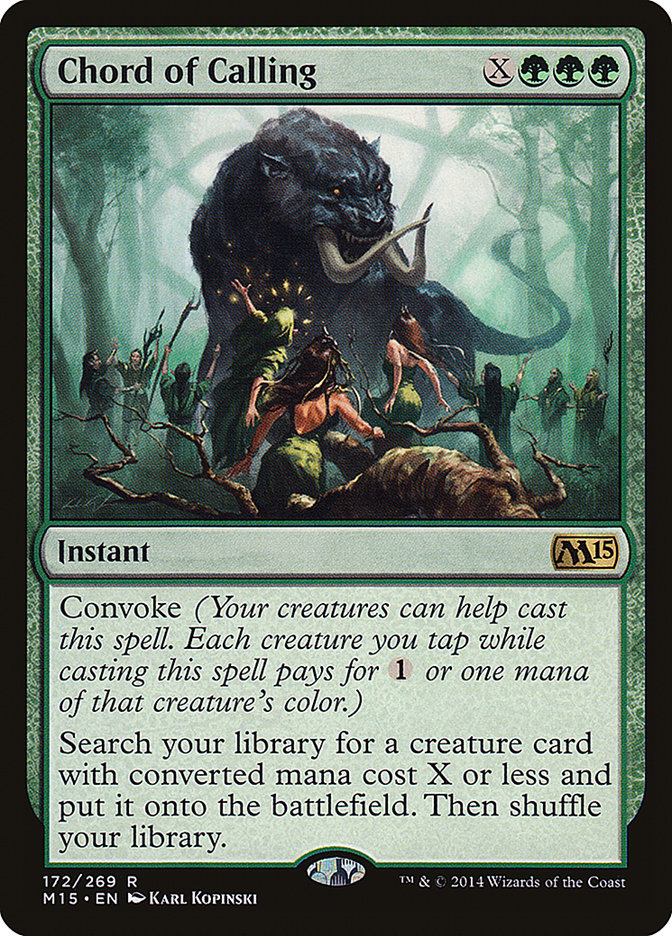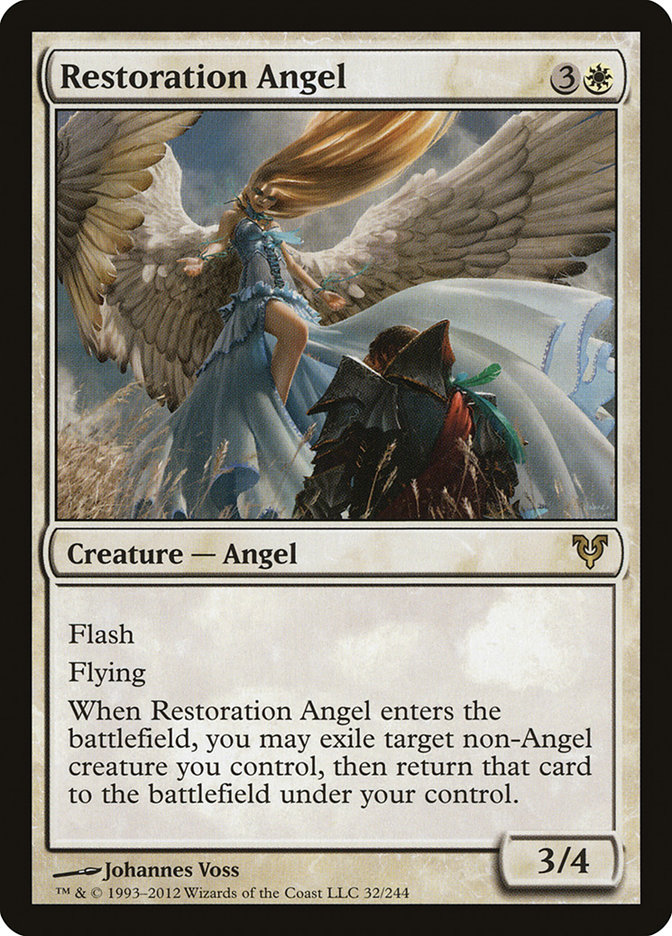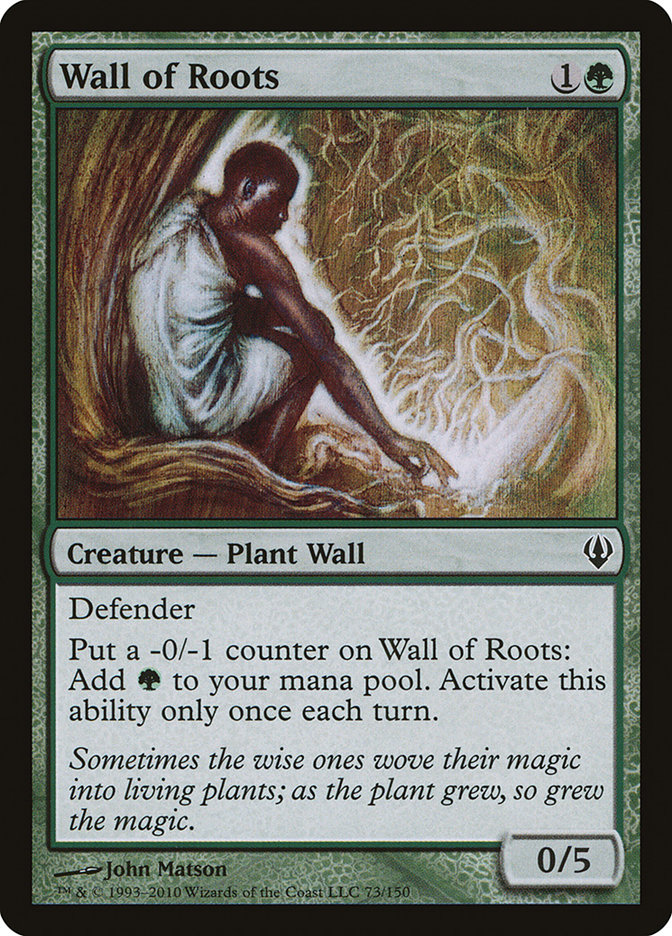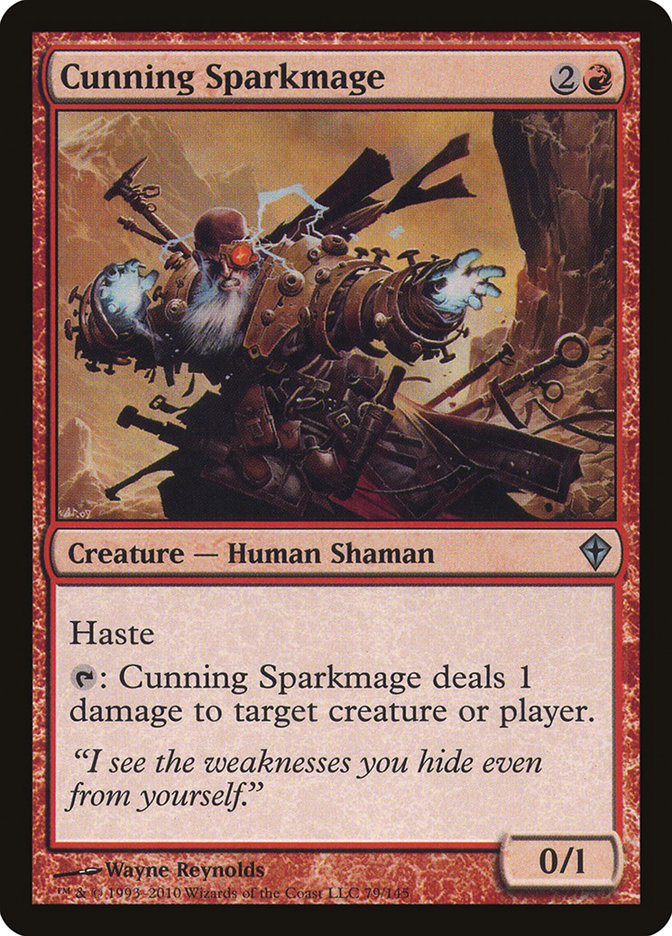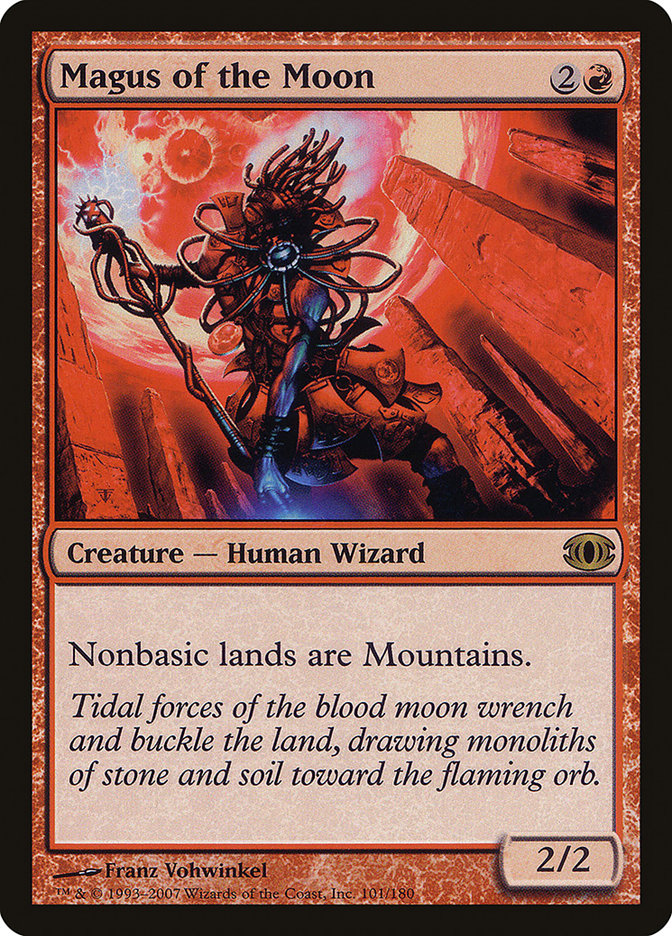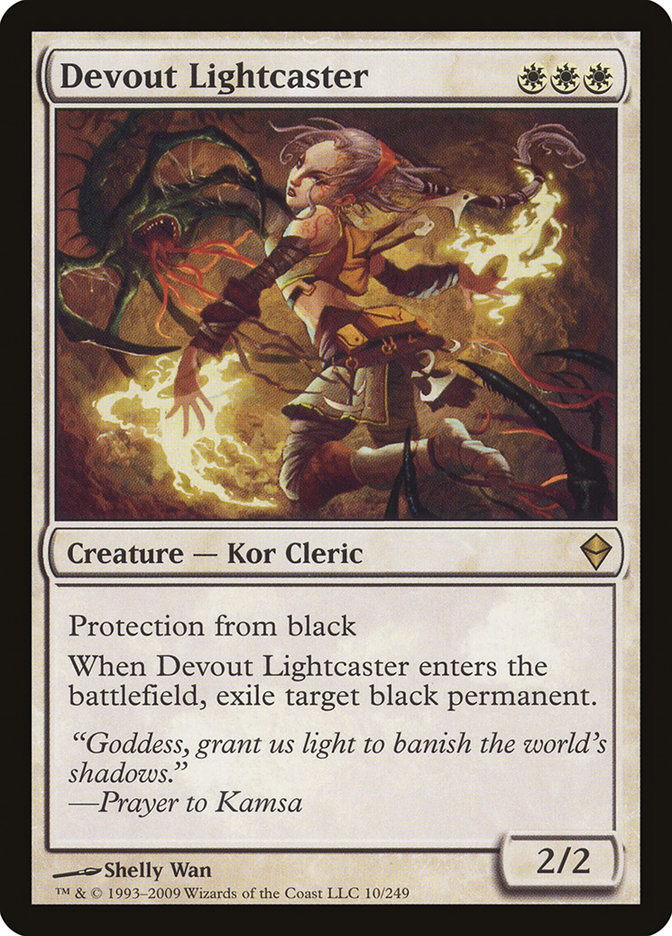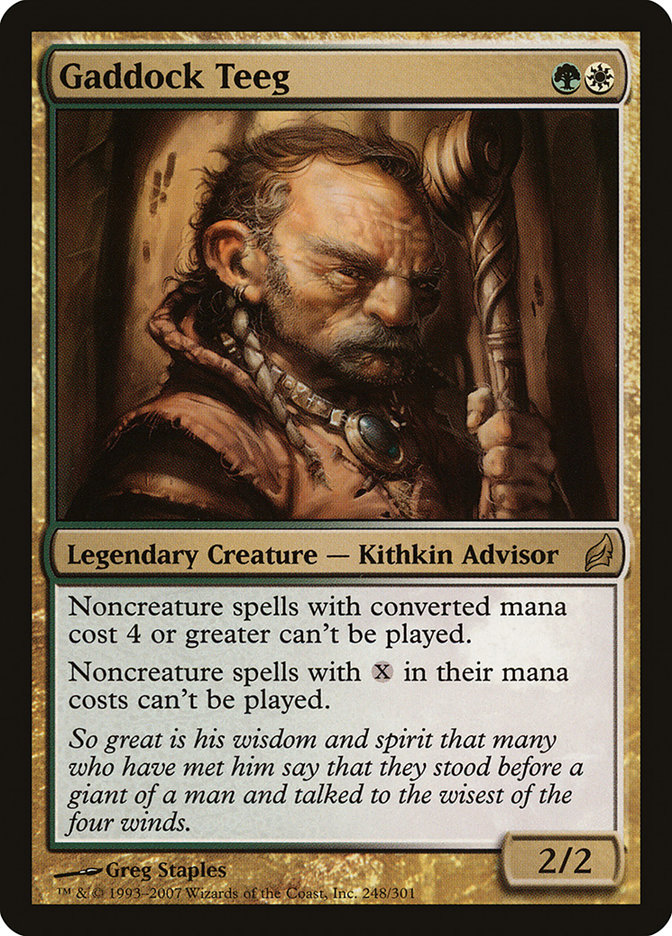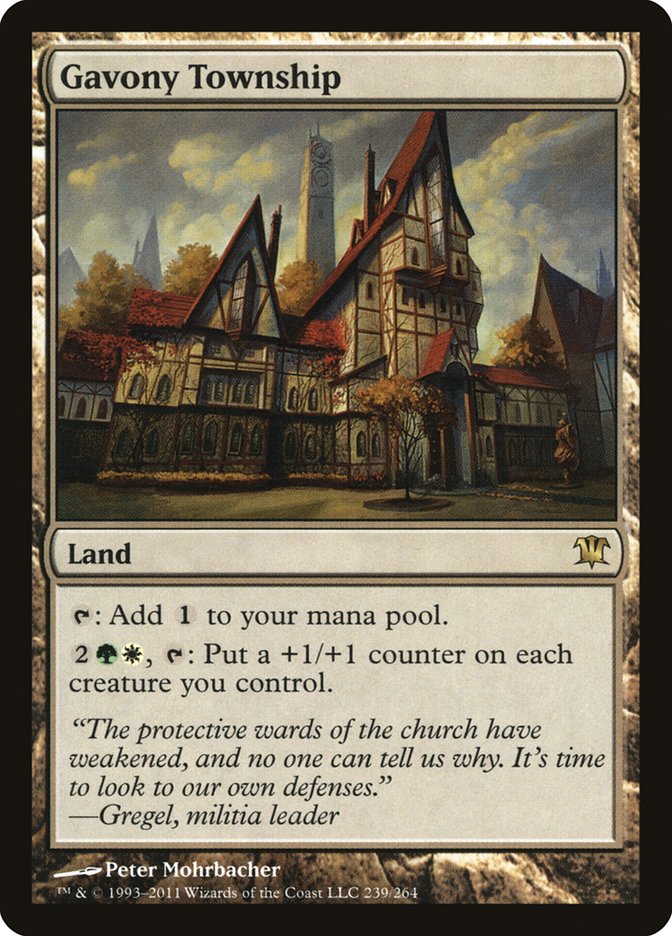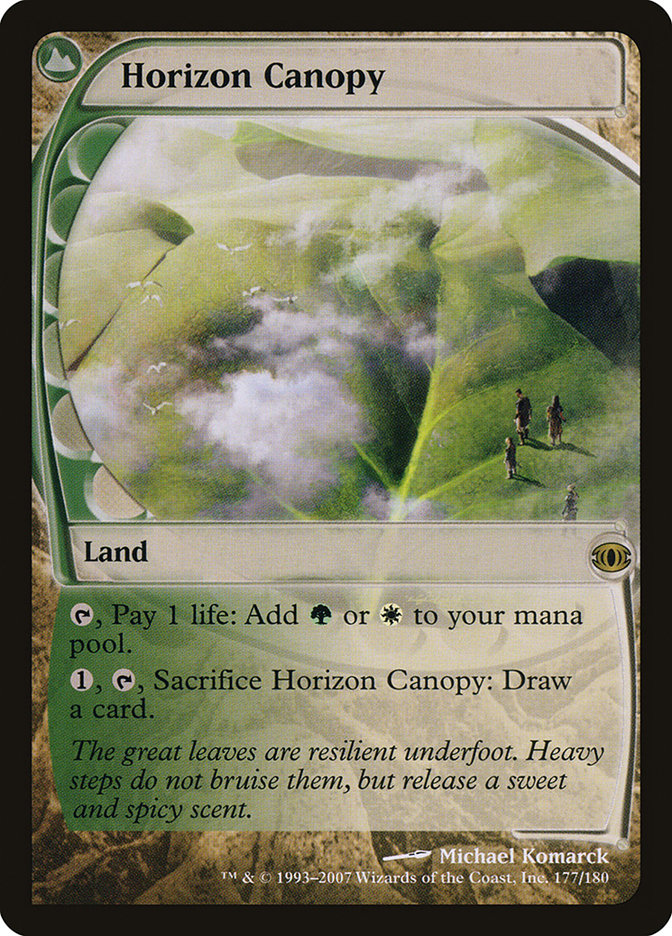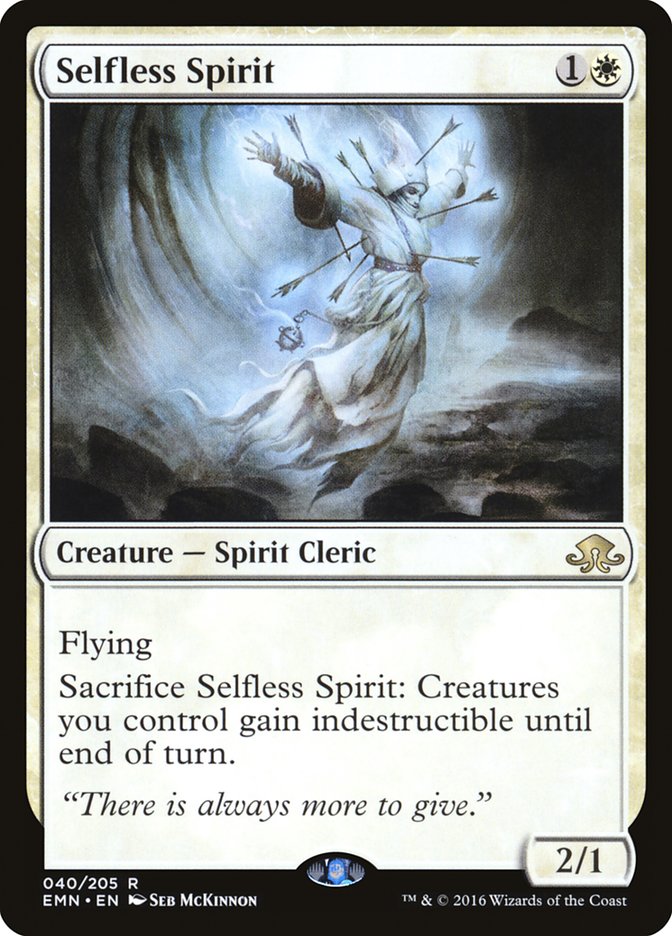Green toolbox decks weren’t the first or even second deck I got into in Modern, but over the years they are the ones I’ve come back to the most.
This is the distillation of what I’ve learned over the last four years tunings these decks for Grand Prix and Pro Tours. What makes them tick? When are they great? Where do they fail?
What Is Combo?
When you think of toolbox decks in Modern, you think of the core combo. That’s what you see in the name of the deck: Kiki Chord, Melira Pod. This skews people’s perceptions of what the deck is trying to do.
At the end of the day, what is your combo? A direct way to end the game. The end goal of a toolbox deck is that: execute a direct way to end the game.
One of the keys of the Modern format is the power of the hate permanents, many of which are creatures. What happens when you resolve Melira, Sylvok Outcast against Infect or Kataki, War’s Wage against Affinity? That’s pretty close to a direct way to end the game.
I like to refer to this as the “one-card combo.” How you win after your opponent isn’t allowed to play is incidental, as you are a huge favorite to win after a single play.
The majority of Modern is linear decks that are susceptible to hate cards, against which your goal is to race to your one card combo via tutors. This is the play pattern that Eldritch Evolution really highlights.
One of the great parts of playing all these hate creatures is keeping this kind of opening hand. You get free wins when you draw your tutor, but you also get them when you draw the right singleton. These non-cohesive hands are definitely below par, but some percentage of the time they are perfect. Always consider this free win value when evaluating opening hands against unknown opponents.
The Other Portion
While “tutor for lethal” works a lot, some decks aren’t vulnerable to it. Snapcaster Mage and Inquisition of Kozilek are each a chunk of the metagame and neither folds to a single hate card.
What about beating fair decks with combos? At times a toolbox deck takes this role, but it is usually a last resort. The draw to Snapcaster Mage and Inquisition of Kozilek strategies is you have tons of tools to pick apart combo, especially when they rely on small-ball creatures.
The combo aspect does keep your opponent honest. The fact that you can access a combo out of nowhere forces their removal spells and mana to be used suboptimally. The problem right now is that Chord of Calling and Eldritch Evolution are based on having creatures on the battlefield, so “kill everything on sight” is natural to play to and suppresses combos. Collected Company and Birthing Pod didn’t have the same issue.
To beat the fair decks, you need a fair plan that grinds harder than they do. Fortunately your filler works well here. Gavony Township turns excess mana creatures from pseudo-lands to real threats. Your Voice of Resurgences and Kitchen Finks match up well against their spot removal. Even your tutors are great, as a single value threat like Thragtusk or Reveillark resembles a “one-card combo” against them by burying them in cards.
There are two problems toolbox decks encounter here. The first is that Jund-style decks are often full of creatures that match yours on value generation. A Dark Confidant or Scavenging Ooze is likely to beat you in the long-term, and a Kalitas, Traitor of Ghet or Olivia Voldaren is going to do that in the very-short-term. You need something to interact and force them into a plan that relies on raw bodies and removal spells. Almost every good plan I’ve had against Jund or Abzan involved Path to Exile, often with Eternal Witness to loop it as needed.
The other problem is that overloading the toolbox aspect of your deck means you have to draw creatures that are barely worth the cardboard they are printed on. Your opponent’s targeted discard and spot removal hit especially hard when they leave you with a hand full of mana creatures and Grizzly Bears. In a heavily fair-deck metagame, the key is condensing your hate card slots so you draw the most two-for-one or bulky creatures along the way and as few 2/2 creatures as possible.
The one exception to a lot of this is Abzan Company. A lot of factors add to up to your maindeck having to include tons of “non-card” creatures. This forces your Game 1 plan into “must combo to catch up,” and fortunately a lot of pieces come together to make that possible. This is why I was such a big fan of multiple Spellskites in that deck: if you have to shove on comboing, shove hard and well. Note that I still sideboarded to grind harder, as they have more hate and removal in Games 2 and 3, making the all-in plan bad.
Why Combo, Then?
If the combo aspect of toolbox decks is worse than hate cards against unfair decks and not great against fair decks, why play a combo to begin with?
The big reason is randomness insurance, which you shouldn’t leave home without in Eternal formats. Having some powerful knockout that hits anything equally means you have the tools to beat all the nonsense you didn’t find the room to prepare for that week. There are even some linear decks that don’t have a great hate card to tutor for and can’t be ground down but are slow enough that you can combo goldfish them.
The best examples of this are the creature decks in the format. They are often light on interaction and easily fold to whatever combo your list has. The oddest ones are the various Hatebears decks, which should be able to shut down what you are doing but instead just lose to Kitchen Finks when they draw hate bears and to combo when they draw normal creatures. Keep in mind the recurring removal sideboard plan that is great against Jund is also great against these decks post-sideboarding, and often you have this metagame sector dominated on all fronts.
Current Builds
There are two big deckbuilding axes in Modern toolbox decks: Eldritch Evolution or Collected Company, and Chord of Calling or no.
Eldritch Evolution and Collected Company could fit in the same deck, but there’s indirect tension that makes it less than optimal. The first part is that minimizing your four- and five-cost creatures for Collected Company hurts the “plus two mana” part of Eldritch Evolution. You can still jump a Birds of Paradise into a three-cost hate card, but there’s less value in sacrificing a Voice of Resurgence or Kitchen Finks when you can only play one four-drop and one five-drop to select. Also note that the five-cost combo pieces that Eldritch Evolution plays well with are terrible with Collected Company.
The other issue is that supporting Collected Company sets you up to flood the battlefield with cheap creatures early. Most of your good targets will also be cheap, making Chord of Calling as good as it gets. You could play a mix, but you only have the slots to play eight to ten non-hits on Collected Company, as you need real hits to make up for Noble Hierarch. Collected Company and Chord of Calling also both play well with Eternal Witness, where Eldritch Evolution doesn’t.
I covered a lot of the Collected Company versus Eldritch Evolution discussion in my earlier articles, but the core concepts are “How good are bulkier creatures?” and “How much Grafdigger’s Cage do I expect?” The more Cages and the better four-cost threats are, the better Eldritch Evolution is.
Chord of Calling or no depends on one thing: do you want to win via combat or combo? This is also “How many fair decks do I have to beat?” and “how many hate cards do I need for the metagame?” The more fair decks and the fewer decks you need to knock out with hate cards, the less you want Chord of Calling. There’s also a lot of overlap between the simple good cards to beat fair decks and beating some of the things you want to hate-card out. Siege Rhino puts the hurt on Burn, more spot removal shores up the Infect and Death’s Shadow matchup, and random cards like Anafenza, the Foremost can pull double duty of beatdown and hate. If your playables line up with what you want to tutor for, you can get away with fewer tutors and still beat linear decks.
If you choose Collected Company and Chord of Calling, you are just Abzan Company. I don’t have a tuned list of this deck, but you have to plan on being combo-focused if you want it to be good. The “too many Company-hit creatures to really brawl” issue mentioned above is in full effect. If you try to move towards a more bulky deck, you are just a clunky deck that is too small to really win. Your plan to grind is just Eternal Witnessing back your toolbox enablers.
If you choose Collected Company and no Chord of Calling, you aren’t a toolbox deck as you don’t have the tutors to play bonus hate cards. I think Spell Queller is great and there is something here, but that’s a bit outside both my realm of expertise and the context of this article.
The decks I worked the most on were Eldritch Evolution shells. If you wanted to play Chord of Calling and Eldritch Evolution you could be either four color with the Kiki-Jiki, Mirror Breaker plus Restoration Angel combo or Abzan with Spike Feeder plus Archangel of Thune. After starting with blue in my deck, this is the Kiki Evolution list I ended with:
Creatures (27)
- 4 Birds of Paradise
- 1 Kiki-Jiki, Mirror Breaker
- 1 Eternal Witness
- 1 Wall of Roots
- 1 Orzhov Pontiff
- 1 Reveillark
- 2 Kitchen Finks
- 2 Noble Hierarch
- 2 Wall of Omens
- 1 Spellskite
- 1 Scavenging Ooze
- 2 Restoration Angel
- 1 Sin Collector
- 3 Voice of Resurgence
- 1 Anafenza, the Foremost
- 1 Siege Rhino
- 1 Pia and Kiran Nalaar
- 1 Selfless Spirit
Lands (23)
Spells (10)

Notes:
I tried more Restoration Angel, but diversity is important.
Six mana creatures plus Wall of Roots felt like half a mana creature too many. I’m unsure what the fix is here, but cutting one might be right.
The sideboard Cunning Sparkmage is there to handle the Inkmoth Nexuses that Orzhov Pontiff misses, and because the effect is so good when you want it.
Magus of the Moon steals many games against random nonsense. It wasn’t good in Game 1s, but it just gives you a freeroll angle against various combo decks post-sideboard.
Devout Lightcaster is the best anti-Kalitas, Traitor of Ghet card I found. It also kills Grim Flayer and Dark Confidant, which is very important.
Gaddock Teeg and Aven Mindcensor are not tried and true, but just known valid hate cards. Feel free to switch them in and out.
I was on Kiki Evolution by default and felt it ended up in a good spot, but I wonder if four-color no-red might have been better. The big draw to Kiki-Jiki combo is that you can play multiple Restoration Angels, as it is a “real Magic card,” where Archangel of Thune costs five and Spike Feeder is bad, but the other red cards are not very good. It is possible that being able to Chord of Calling for Spell Queller alongside the black cards is worth making your combo slightly less reliable.
I also put some work into the Abzan-only list of Eldritch Evolution and determined it should just not play the combo. You die to Tron, oh well. Abzan decks have done that forever anyway. Just play the best anti-fair cards and tutor for the hate that you can get.
Creatures (28)
- 3 Birds of Paradise
- 1 Nekrataal
- 1 Eternal Witness
- 1 Orzhov Pontiff
- 3 Kitchen Finks
- 1 Wilt-Leaf Liege
- 3 Noble Hierarch
- 1 Qasali Pridemage
- 1 Scavenging Ooze
- 1 Restoration Angel
- 1 Sigarda, Host of Herons
- 1 Thragtusk
- 1 Sin Collector
- 4 Voice of Resurgence
- 1 Anafenza, the Foremost
- 3 Siege Rhino
- 1 Selfless Spirit
Lands (23)
Spells (9)

Notes:
You are just G/W Little Kid with a tutor package. Don’t try to get too fancy.
The third Gavony Township might want to be a Horizon Canopy, and the Wilt-Leaf Liege is experimental over the fourth Siege Rhino or really any other four-drop.
Selfless Spirit might not be necessary, which would push the Spellskite to the maindeck. Qasali Pridemage could also find its way to the sideboard.
Yes, the sideboard has a million spells. They are all great.
Why Didn’t I Play Toolbox?
I opted to not play a toolbox deck at Grand Prix Indianapolis. I don’t think the deck was horrible, but there was no chance it would be great. Simply put, it was pulled in too many directions at once.
The biggest issue was that both Abzan and unfair decks were super-popular, but the unfair decks weren’t condensed. That meant you needed a lot of hate cards, which in turn makes the Abzan matchup unfavorable. I wanted to fight Burn, Infect, Death’s Shadow Zoo, and Dredge on the true unfair side, but there is very little hate overlap there. You also have this weird issue where, even after you Eldritch Evolution for a hate card, you can clunk out a bit, which is pretty bad against all of these relatively resilient decks.
I would have played a Collected Company deck, but there were too many Grafdigger’s Cages expected for Abzan Company. I think there may have been a great non-Chord of Calling Collected Company deck, but see my above discussion about that basically being a different deck.
Still, there was a toolbox element to the G/R Valakut deck I played through Summoner’s Pact. That’s the great part of these decks: as long as Wizards of the Coasts still has tutoring for creatures in green’s color pie, there will be new options for these decks. Each one offers unique upsides in deckbuilding, and I predict midrange toolbox will continue to be a Modern staple archetype for a long time to come.


